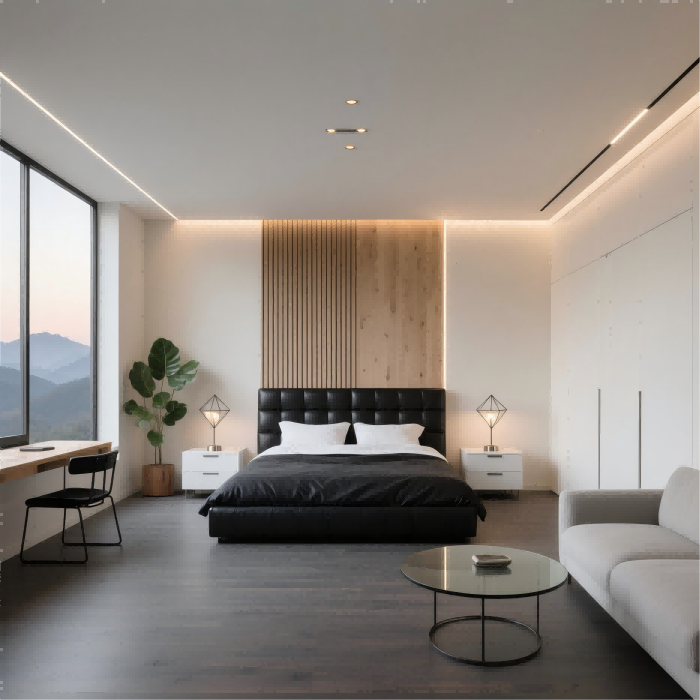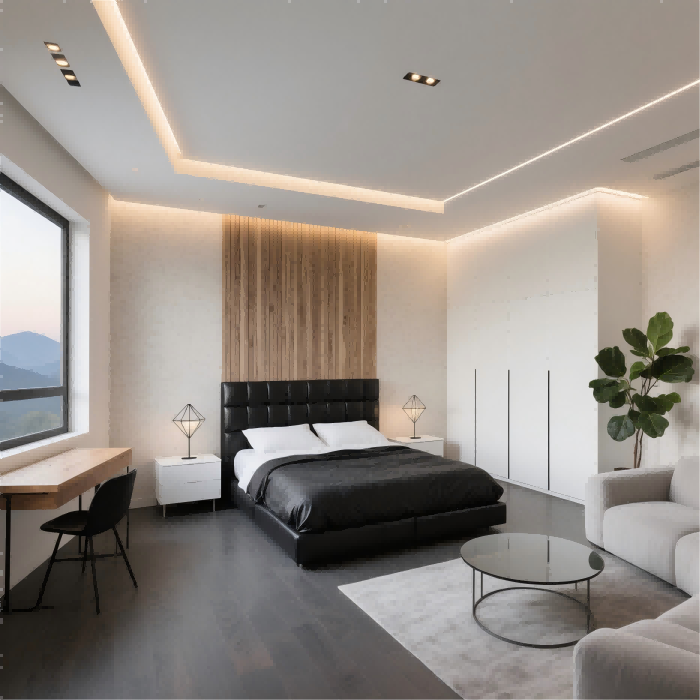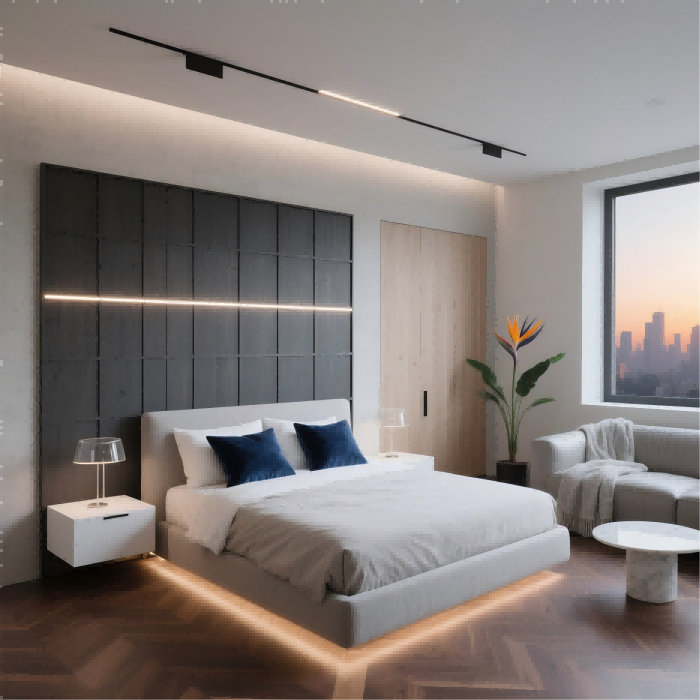I. Core Drivers: Evolving Lighting Demands
1. Functional Scenario Diversification
Modern bedrooms now integrate multifunctional zones (reading, entertainment, dressing, relaxation) beyond sleep. Single-ceiling lighting fails task-specific demands:
Reading: Localized high-intensity lighting (e.g. task lamps/wall sconces)
Night movement: Low-level glare-free illumination (e.g. under-bed motion sensors)
Media viewing: Ambient bias lighting (e.g. cove LED strips)
2. Health-Centric Light Environment
Traditional overhead lights cause retinal stress from excessive blue spectrum peaks and flicker. Decentralized systems enable:
Circadian alignment via 2700K-3000K warm white tones
Indirect lighting distribution reducing eye fatigue
Flicker-free drivers eliminating migraine risks

II. Technological Enablers: LED Advancements
1. Miniaturization & High Efficacy
Sub-1mm² LED chips enabling seamless integration (<5mm profile strips)
Recessed solutions achieving "light without visible fixtures" – impossible for fluorescents/incandescents
2. Precision Beam Control
Optical lenses (15°/24° beam angles) eliminate shadow traps (e.g. closet corners)
Grazing light techniques enhancing texture perception
3. Mature Dimming & Tuning
Independent 1%-100% dimming with 2700K-5000K CCT shift
Smart zoning exceeding monolithic fixture capabilities

III. Design Advantages
| Dimension | Decentralized System | Traditional Lighting |
|---|---|---|
| Spatial Perception | Ceiling height preservation | Visually oppressive |
| Glare Control (UGR<19) | Indirect optical design | Direct source exposure |
| Energy Efficiency | 30%-50% verified savings | Fixed-circuit waste |
| Maintenance | Fault-isolated redundancy | Single-point failure risk |
IV. Bedroom Implementation Framework
Core Layers: A. Ambient Layer → Recessed LED strips / Indirect coves B. Task Layer → Bedspot reading lights (5W, 24° beam) / Wardrobe sensor strips C. Accent Layer → Under-bed infrared guides (0.5W/m) / Decorative sconces (2700K)
Illuminance Standards
General ambient: 50-100 lux
Reading zones: 300 lux minimum
Night path: ≤10 lux

V. Critical Implementation Guidelines
Optical Engineering
Avoid downlight abuse: Use >30° baffled trim for glare control
Wall-washing precision: Maintain ≥15cm fixture-to-wall clearance
Electrical Infrastructure
Circuit separation: Independent feeds for ambient/task/accent layers
Cat.5e+ cabling: Future-proofing for smart systems
Spectral Validation
Mandate Ra>90 & R9>50 LEDs: Prevent color distortion
Full-spectrum certification: Reject flicker-prone drivers
Conclusion: Beyond Illumination to Environmental Crafting
Decentralized lighting enables an experience-focused paradigm shift from space-illumination to lightscaping. Success requires:
Photometric simulation (DIALux mapping)
Verified distribution curves
Health-first spectrum validation



